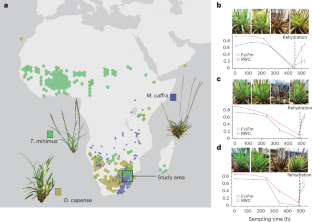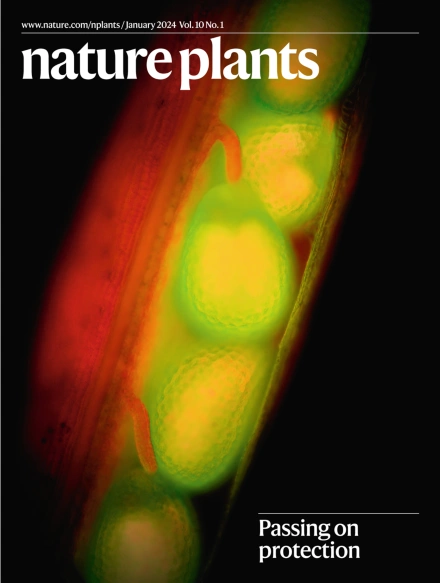禾本科植物耐干燥性的趋同进化
IF 15.8
1区 生物学
Q1 PLANT SCIENCES
引用次数: 0
摘要
作为在极端环境中生存的一种适应性,耐干燥性在植物中反复进化。植物利用类似的生物物理和细胞机制在无水环境中生存,但在分子、基因和调控水平上的趋同性仍有待检验。在这里,我们探讨了禾本科植物耐干燥性反复进化的进化机制。我们观察到与干燥相关的基因复制和表达模式有很大的趋同性。具有共同起源的合成基因在不同物种间被激活,这表明了平行进化。在其他情况下,相似的代谢途径被诱导,但使用不同的基因组,这表明表型趋同。物种特有的机制补充了这些共享的核心机制,强调了进化对干旱适应的复杂性和多样性。我们的研究结果让人们深入了解了驱动干燥耐受性的进化过程,并强调了平行进化和趋同进化在应对环境挑战中的作用。本文章由计算机程序翻译,如有差异,请以英文原文为准。


Convergent evolution of desiccation tolerance in grasses
Desiccation tolerance has evolved repeatedly in plants as an adaptation to survive extreme environments. Plants use similar biophysical and cellular mechanisms to survive life without water, but convergence at the molecular, gene and regulatory levels remains to be tested. Here we explore the evolutionary mechanisms underlying the recurrent evolution of desiccation tolerance across grasses. We observed substantial convergence in gene duplication and expression patterns associated with desiccation. Syntenic genes of shared origin are activated across species, indicative of parallel evolution. In other cases, similar metabolic pathways are induced but using different gene sets, pointing towards phenotypic convergence. Species-specific mechanisms supplement these shared core mechanisms, underlining the complexity and diversity of evolutionary adaptations to drought. Our findings provide insight into the evolutionary processes driving desiccation tolerance and highlight the roles of parallel and convergent evolution in response to environmental challenges. Marks et al. explore the repeated evolution of desiccation tolerance in grasses. Their analysis of diverse resurrection grasses reveals significant genetic convergence and parallel evolution, suggesting a shared foundation for adapting to extreme drought.
求助全文
通过发布文献求助,成功后即可免费获取论文全文。
去求助
来源期刊

Nature Plants
PLANT SCIENCES-
CiteScore
25.30
自引率
2.20%
发文量
196
期刊介绍:
Nature Plants is an online-only, monthly journal publishing the best research on plants — from their evolution, development, metabolism and environmental interactions to their societal significance.
 求助内容:
求助内容: 应助结果提醒方式:
应助结果提醒方式:


